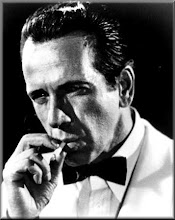This study was funded by the National Cancer Institute and National Institute on Alcohol Abuse and Alcoholism. Remember what the Last Psychiatrist says: What do researchers want to be true?
First comes the filter that will aid our interpretation of the results:
"TODAY’S YOUTH HAVE UNPRECEDENTED ACCESS to entertainment media (Roberts et al., 2005), and longitudinal research has linked various forms of entertainment media with aggressive behavior (Bushman and Anderson, 2001), sexual behavior (Collins et al., 2004), and tobacco use (Sargent, 2005). Indeed, the available research evidence has led the National Cancer Institute (2008) to declare a causal relation between exposure to movie smoking and youth smoking initiation."In the words of Mr. Mackey, "Mm..R-rated movies are bad...mmkay."
The study was done by survey. 3,577 youths where chosen out of 4,655 (grades 5-8) because they reported to never have drunken alcohol without the knowledge of their parents. Also at baseline assessment the youths rated how restrictive their parents were in allowing them to view R-rate movies.
Statistics 101: Very boring, but very important to interpret these results.
This study is correlational. This results are known as the standardized coefficient. This can vary from +1 (indicating a perfect positive relationship), to zero (indicating no relationship), all the way down to -1 (indicating a perfect negative relationship, that is, when the frequency of a factor goes up, the other factor goes down). As a rule of thumb, standardized coefficients between .00 and .30 are considered weak, between .30 and .70 are moderate, and between .70 and 1.00 are considered strong.
The primary meaning of standardized coefficients lies in the amount of variation in one variable that is accounted for by the variable with which it is correlated. To obtain this information, you square the standardized coefficient (e.g., .30 x.30). This number is called the coefficient of determination. Then you multiply the coefficient by determination 100. This proportion of variance indicates the percentage of variance. The coefficient of determination is the primary information measure. Correlation coefficients of .30 account for about 10 percent of the variance (.30x.30 =.90x100= 9%).
Here are the results as reported in the abstract, that is, the information they want you to know:
"The sample included 2,406 baseline never-drinkers who were surveyed at follow-up, of whom 14.8% had initiated alcohol use. At baseline, 20% reported never being allowed to watch R movies, and 21% reported being allowed all the time. Adolescents allowed to watch R-rated movies had higher rates of alcohol initiation (2.9% initiation among never allowed, 12.5% once in a while, 18.8% sometimes, and 24.4% all the time). Controlling for sociodemographics, personality characteristics, and authoritative parenting style, the adjusted odds ratios for initiating alcohol use were 3.0 (95% CI [1.7-5.1]) for those once in a while allowed, 3.3 [1.9, 5.6] for those sometimes allowed, and 3.5 [2.0, 6.0] for those always allowed to watch R-rated movies. Alcohol initiation was more likely if R-rated movie restriction relaxed over time; tightening of restriction had a protective effect (p < .001)."With odds-ratios, 1.0 represent the prevalence of something (e.g., drinking behavior) that already exists in the population. Anything above that represents an increase in prevalence. For example, in the study, it's reported that youths who have peers who drink have an OR of 5.7, meaning that there is over a 400% increase in the incidence of early on-set drinking when one's peers start drinking early (peer pressure). Kids allowed to view R-rated content once in a while showed a 200% increase, those allowed sometimes saw a 230% increase, and those allowed all the time saw a 250% increase.
While these numbers are quite high, this tells us nothing about the relationship strength. Remember multiple variables can lead to this result. Here is a graph of the correlation coefficients:
Exposure to R-rate movies has a standardized coefficient of 0.10. This relationship is weak. Using the formula above, the amount of variance in behavior attributed to viewing R-rated content is only 1%.
So why are youths, who are exposed to R-rated content, 2 times more likely to try alcohol at an earlier age?
Here is how the authors explain it:
"Youth who say that their parents allow them to watch R movies see more R movies and, therefore, more depictions of alcohol use...thus, the mechanism could be social influence via modeling of positive depictions of alcohol use."Wrong!
Exposure to R-rated movies various with onset of early alcohol use by 1%. That means 99% of the variance is explained by other reasons (e.g., peer pressure!) While it is true that this tiny relationship is statistically significant, it has no practical significance what so ever.
But who cares about the actual science, politicians and other nanny state advocates have their sound bite,
"The research to date suggests that keeping kids from R-rated movies can help keep them from drinking, smoking and doing a lot of other things that parents don't want them to do, Sargent said." (2)If only it were that simple.
Tanski SE, Cin SD, Stoolmiller M, & Sargent JD (2010). Parental R-rated movie restriction and early-onset alcohol use. Journal of studies on alcohol and drugs, 71 (3), 452-9 PMID: 20409440








